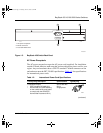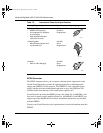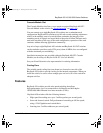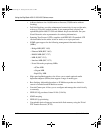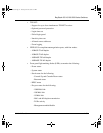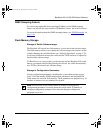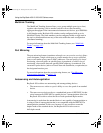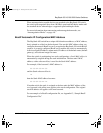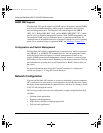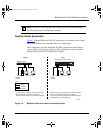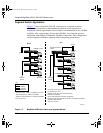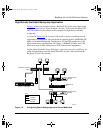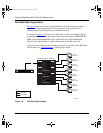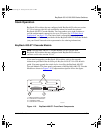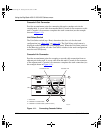
BayStack 450 10/100/1000 Series Switches
302401-D Rev 00
1-17
When autonegotiation-capable devices are attached to the BayStack 450 switch,
the switch ports negotiate down from 100 Mb/s speed and full-duplex mode until
the attached device acknowledges a supported speed and duplex mode.
For more information about autosensing and autonegotiation modes, see
“Autonegotiation Modes” on page 4-8.
BootP Automatic IP Configuration/MAC Address
The BayStack 450 switch has a unique 48-bit hardware address, or MAC address,
that is printed on a label on the back panel. You use this MAC address when you
configure the network BootP server to recognize the BayStack 450 switch BootP
requests. A properly configured BootP server enables the switch to automatically
learn its assigned IP address, subnet mask, IP address of the default router (default
gateway), and software image file name.
When the switch is participating in a stack configuration, a Stack MAC address is
automatically assigned during the stack initialization. The base unit’s MAC
address, with a software offset, is used for the Stack MAC address.
For example, if the base unit’s MAC address is:
00-00-82-99-44-00
and the Stack software offset is:
1F
then the Stack MAC address becomes:
00-00-82-99-44-1F
If another unit in the stack is assigned as the base unit, the MAC address of the
new base unit (with offset) now applies to the stack configuration. The original
stack IP address still applies to the new base unit.
For an example of a BootP configuration file, see Appendix G, “Sample BootP
Configuration File.”
kombk.book Page 17 Tuesday, June 29, 1999 3:25 PM



